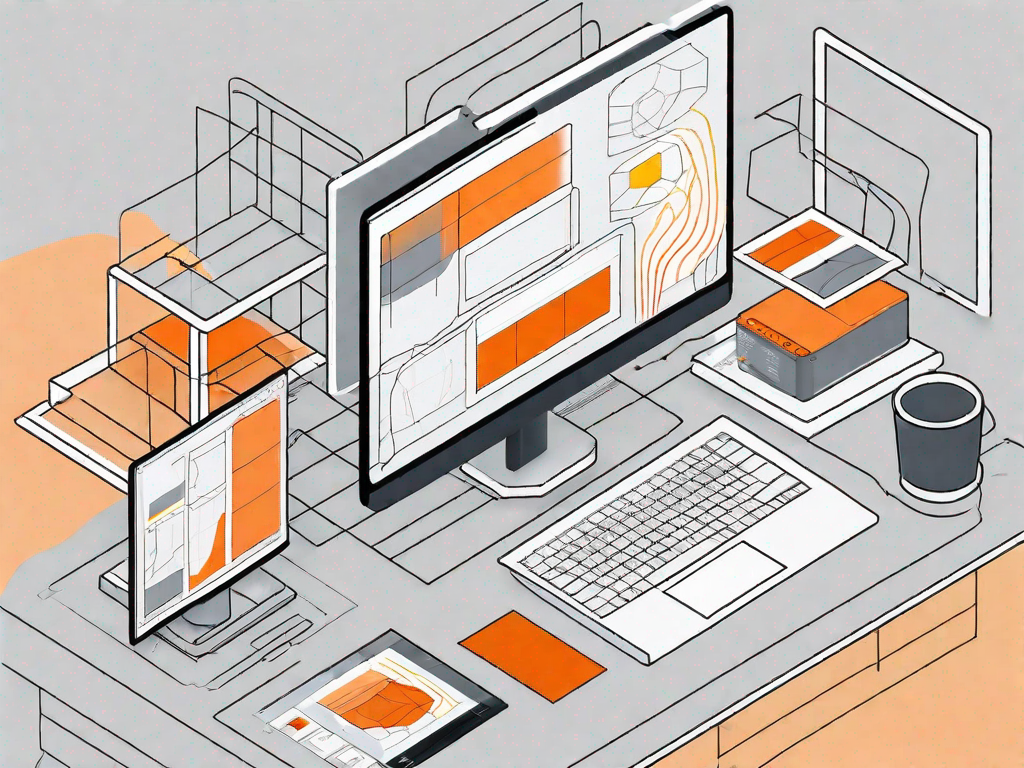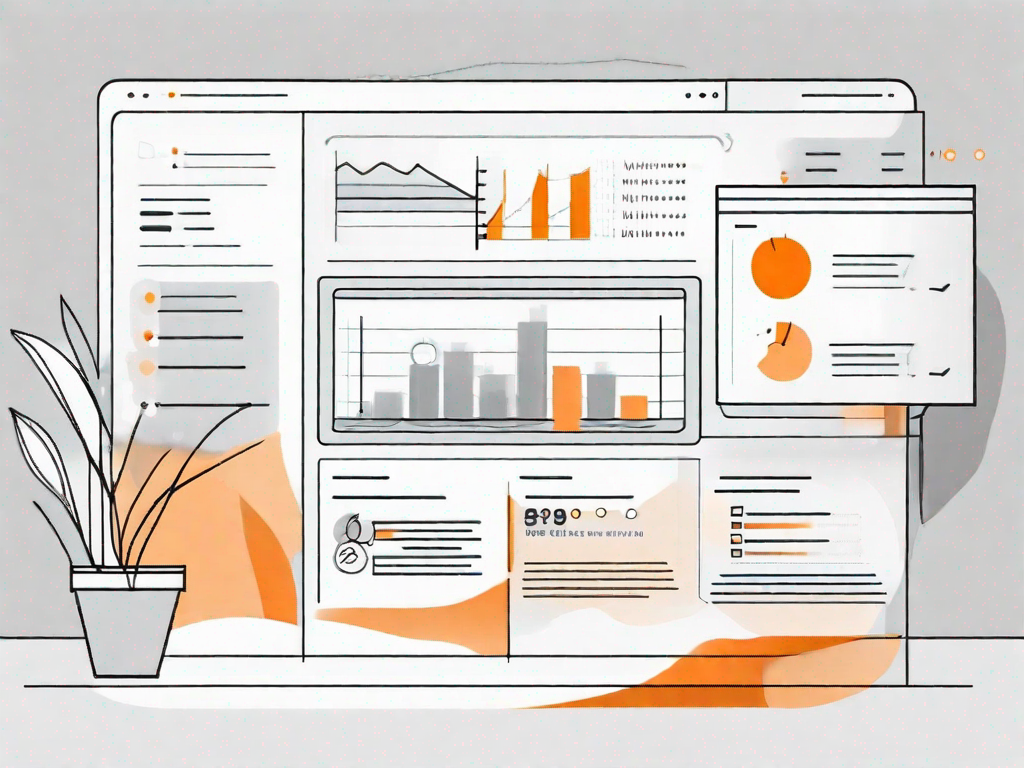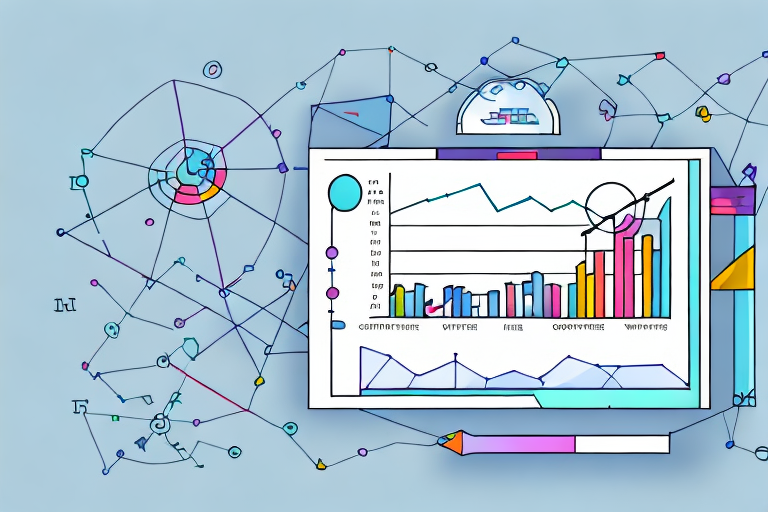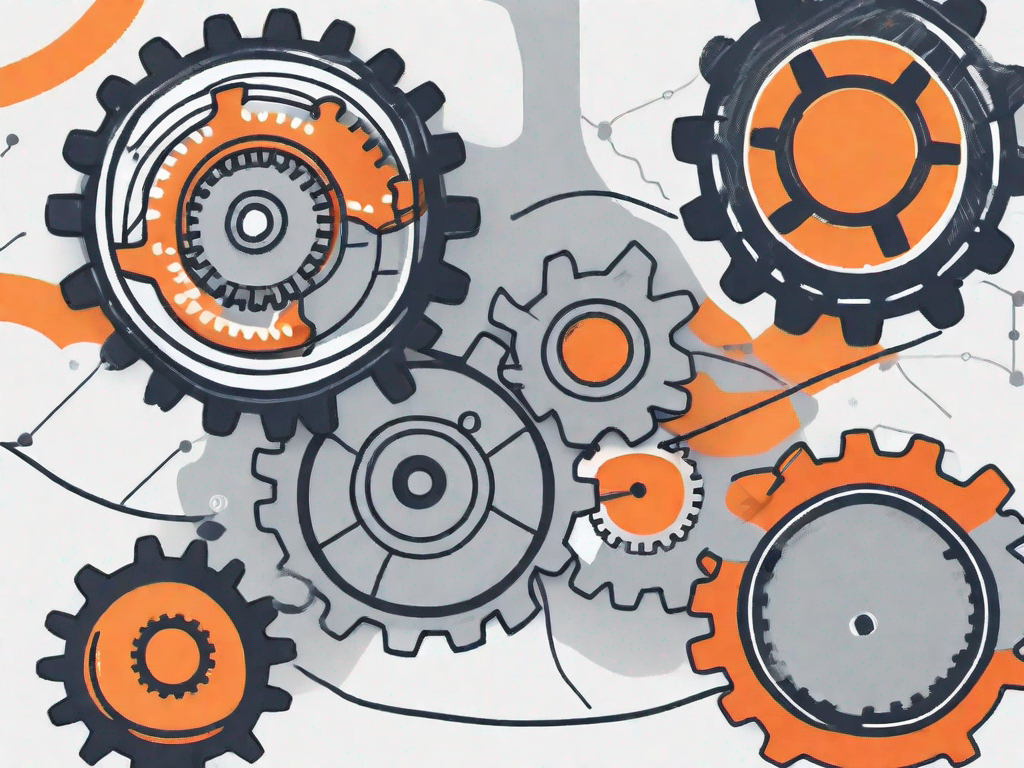.svg)
Top 10 Webflow Website for a Environmental Company
.svg)

In today's digital age, having a strong online presence is crucial for any business, and environmental companies are no exception. A well-designed website not only showcases a company's values and services but also plays a key role in raising awareness about environmental issues. In this article, we will explore the top 10 Webflow websites for environmental companies, highlighting their unique features and discussing the importance of web design in this sector.
Understanding the Importance of Web Design for Environmental Companies
When it comes to environmental advocacy, aesthetics play a vital role. A visually appealing website can capture the attention of visitors and effectively communicate the company's message. By incorporating images, videos, and engaging content, environmental companies can create a powerful platform for sharing their vision with the world.
Furthermore, a well-designed website helps establish credibility. In an era of digital skepticism, an aesthetically pleasing and user-friendly website can reassure potential customers that the company is professional, trustworthy, and dedicated to its cause.
The Role of Aesthetics in Environmental Advocacy
Aesthetics play a significant role in environmental advocacy. Through careful use of colors, typography, and imagery, a website can evoke certain emotions and inspire action. For example, using images of lush green landscapes or endangered wildlife can immediately convey the importance of protecting the environment.
Additionally, a visually appealing website can attract and engage a wider audience. People are more likely to explore a site that is visually pleasing and easy to navigate. By creating an immersive environment through design, environmental companies can capture the attention and interest of visitors, increasing the chances of conversion and support.
Imagine a website for an environmental company that uses vibrant images of pristine oceans, majestic mountains, and diverse ecosystems. These images would not only captivate visitors but also remind them of the beauty and fragility of our planet. By incorporating such visuals, the website creates an emotional connection with its audience, motivating them to take action and support environmental causes.
Moreover, the use of typography can also contribute to the overall aesthetics of a website. Environmental companies can choose fonts that reflect their values and mission. For instance, a company focused on renewable energy may opt for a modern and clean font, while an organization dedicated to wildlife conservation may choose a more organic and nature-inspired typeface.
How Web Design Can Enhance Company Credibility
A professionally designed website can significantly enhance a company's credibility in the eyes of customers and stakeholders. A well-structured site demonstrates attention to detail and shows that the company is committed to delivering a high-quality user experience.
Moreover, an intuitive and user-friendly website design instills trust and confidence in visitors. By organizing information in a logical and accessible manner, environmental companies can make it easy for users to find the information they need, thus building a positive impression of their expertise and reliability.
Imagine visiting a website for an environmental company and being greeted by a clean and organized layout. The navigation menu is easy to find, and the content is well-structured, allowing you to quickly locate the information you are looking for. This level of professionalism and attention to detail immediately instills confidence in the company's capabilities and commitment to its cause.
In addition to the layout, website functionality also plays a crucial role in enhancing credibility. A website that loads quickly, is mobile-responsive, and has a seamless user interface indicates that the company values user experience and is up-to-date with the latest web design trends. These factors contribute to the overall perception of the company as modern, reliable, and technologically competent.
Furthermore, a well-designed website often includes testimonials, case studies, and success stories. These elements provide social proof and demonstrate the company's track record of delivering results. By showcasing the positive experiences of previous clients or highlighting successful environmental projects, the website reinforces the company's credibility and expertise.
A Comprehensive Review of the Top 10 Webflow Websites
Now let's dive into the top 10 Webflow websites for environmental companies. Each of these websites has distinct features and strengths that make them stand out in the industry. Let's explore them one by one:
Website 1: A Deep Dive
Website 1 showcases a stunning visual layout with vibrant, nature-inspired imagery. The use of parallax scrolling and interactive elements creates an immersive experience for visitors, engaging them in the company's mission. The site also offers informative and compelling content, providing visitors with valuable insights into environmental issues and solutions.
Website 2: Highlighting Key Features
Website 2 excels in showcasing the company's key features and services. The homepage features a concise and engaging overview, with clear calls-to-action for visitors to learn more. The use of multimedia elements, such as videos and infographics, effectively communicates complex environmental concepts in an accessible way.
Website 3: What Sets It Apart
Website 3 stands out by incorporating interactive features that allow visitors to actively participate in environmental initiatives. The site includes interactive maps, quizzes, and calculators, empowering users to make informed decisions and take action. The intuitive user interface enhances the overall user experience and encourages prolonged engagement.
Website 4: A Closer Look
Website 4 focuses on providing in-depth information and resources on specific environmental topics. The site offers a wealth of well-researched articles, case studies, and downloadable materials. The clean and organized layout ensures easy navigation and helps users find the information they need quickly.
Website 5: Unpacking Its Success
Website 5 has achieved great success through an effective blend of striking visuals and compelling storytelling. The site features interactive photo galleries, storytelling videos, and user-generated content, creating an emotional connection with visitors. The seamless integration of social media platforms encourages further engagement and sharing.
Website 6: Unique Selling Points
Website 6 stands out by highlighting the company's unique selling points and innovative approaches to environmental issues. The site effectively communicates the company's expertise and showcases its success stories. The use of animated infographics and interactive timelines further enhances the site's visual appeal and engages visitors.
Website 7: A Comprehensive Analysis
Website 7 offers a comprehensive analysis of environmental challenges and solutions. The site provides in-depth reports, data visualizations, and interactive charts to educate and inform visitors. The clean and minimalist design keeps the focus on the content, making it easy for users to absorb the information.
Website 8: Key Takeaways
Website 8 excels in delivering key takeaways and actionable advice for individuals and businesses to make a positive impact on the environment. The site provides practical tips, step-by-step guides, and recommended resources. The use of infographics and checklists makes the information easily digestible and encourages user engagement.
Website 9: A Detailed Review
Website 9 offers a detailed review of various environmental initiatives and projects. The site showcases success stories from around the world and provides insights into the strategies behind them. The use of interactive maps and storytelling formats creates an engaging narrative that captivates visitors.
Website 10: What Makes It Stand Out
Website 10 stands out with its innovative and immersive design. The site incorporates virtual reality experiences and 3D animations to create a unique and memorable user experience. By allowing visitors to explore and interact with virtual environments, the company effectively conveys its commitment to pushing boundaries in environmental advocacy.
Now that we have explored the top 10 Webflow websites for environmental companies, it is evident that these websites have raised the bar in terms of design, user experience, and content. Each website offers a unique approach to engaging visitors and providing valuable information about environmental issues and solutions.
It is encouraging to see how these websites leverage technology and creativity to make a positive impact on the environment. From interactive features to immersive experiences, these websites are paving the way for a more engaging and informed approach to environmental advocacy.
As the demand for sustainable practices continues to grow, it is crucial for environmental companies to have a strong online presence. These top 10 Webflow websites serve as excellent examples of how to effectively communicate a company's mission, engage visitors, and inspire action.
With their visually stunning layouts, informative content, and interactive features, these websites are not only raising awareness about environmental issues but also empowering individuals and businesses to make a difference.
Key Elements of Successful Environmental Webflow Websites
While each of the top 10 Webflow websites for environmental companies has its unique strengths, there are key elements that contribute to their success:
User-Friendly Design: A Must-Have
A user-friendly design is crucial for ensuring a positive user experience. Intuitive navigation, clear calls-to-action, and well-organized content make it easy for visitors to navigate the site and find the information they need.
For instance, imagine visiting an environmental website and being greeted by a cluttered homepage with no clear direction. It would be overwhelming and frustrating, causing visitors to quickly lose interest and leave the site. However, a well-designed website with a logical flow and intuitive interface creates a seamless browsing experience, encouraging visitors to stay longer and explore further.
Moreover, user-friendly design goes beyond aesthetics. It also includes accessibility features, such as alt text for images and captions for videos, ensuring that all users, including those with visual impairments, can fully engage with the content.
The Power of Visual Storytelling
Visual storytelling is a powerful tool for engaging visitors and communicating the company's message effectively. By using compelling visuals, such as images, videos, and infographics, environmental companies can create an emotional connection with their audience and inspire action.
For example, imagine landing on a website that showcases stunning photographs of endangered wildlife in their natural habitats. These captivating images not only grab attention but also evoke empathy and a sense of urgency to protect these vulnerable species. By combining visuals with informative and impactful storytelling, environmental websites can effectively convey their mission and inspire visitors to take action.
Furthermore, visual storytelling can also be used to showcase the positive impact of environmental initiatives. By featuring before-and-after images or success stories, websites can highlight the tangible results of their efforts, instilling hope and motivating others to get involved.
Incorporating Interactive Elements
Interactive elements, such as quizzes, calculators, and maps, provide a hands-on experience for visitors and encourage active engagement. These features help visitors better understand environmental concepts, make informed decisions, and take tangible actions towards sustainability.
For instance, imagine a website that offers an interactive carbon footprint calculator. Visitors can enter their daily activities, such as transportation methods and energy consumption, and instantly see the environmental impact of their choices. This interactive tool not only educates users about their carbon footprint but also empowers them to make more sustainable choices in their daily lives.
Moreover, interactive maps can be used to showcase environmental projects and initiatives around the world. Visitors can explore different locations, learn about conservation efforts, and even find ways to get involved or support these initiatives.
Prioritising Mobile-First Design
In an increasingly mobile world, it is essential for environmental websites to prioritize mobile-first design. Responsive layouts, fast loading times, and easy-to-use interfaces across various devices ensure that the company's message reaches a wider audience and remains accessible to all.
Imagine trying to access an environmental website on a smartphone, only to find that the text is too small to read, buttons are unresponsive, and images are distorted. Frustrating, isn't it? By prioritizing mobile-first design, websites can ensure that their content is optimized for different screen sizes and devices, providing a seamless experience for users regardless of the device they are using.
Additionally, fast loading times are crucial for mobile users who are often on the go and have limited patience. By optimizing images and minimizing unnecessary scripts, websites can deliver content quickly, keeping visitors engaged and preventing them from bouncing off to other sites.
In conclusion, the top 10 Webflow websites for environmental companies demonstrate the power of effective web design in driving environmental advocacy. Through visually appealing designs, engaging storytelling techniques, and interactive features, these websites successfully communicate their message, enhance credibility, and inspire action. By incorporating user-friendly design and prioritizing mobile-first approaches, environmental companies can create impactful online platforms that contribute to a better world.
Let's
Let’s discuss how we can bring reinvigorated value and purpose to your brand.







.svg)